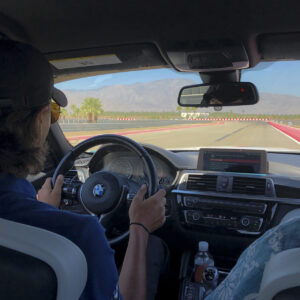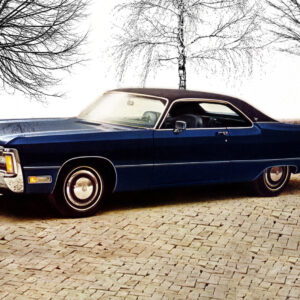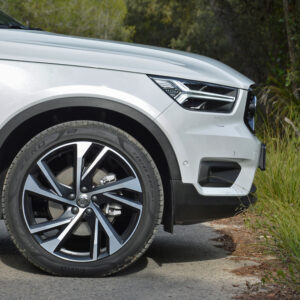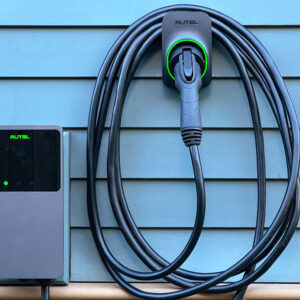Ford is revolutionizing the iconic Bronco nameplate by introducing a lineup of models that includes crossovers, SUVs, and potentially even a pickup truck. Currently, two models have been unveiled: the 2021 Bronco and the 2021 Bronco Sport. Although they share a name and certain design cues, these vehicles are distinct from each other.
Design
While the Bronco and the Bronco Sport draw inspiration from the original 1960s Bronco in terms of styling, their similarities are only superficial.
The Bronco, built on a truck-based, body-on-frame chassis, is available in two- and four-door configurations. Both versions offer the option to remove the roof and doors, with the exception of the non-folding windshield. On the other hand, the Bronco Sport is a four-door crossover with a car-based platform, and its doors and roof are not designed to be taken off. Despite having four doors, the Bronco Sport is only slightly shorter than the two-door Bronco, and it rides on a longer wheelbase. The four-door Bronco is longer overall than both the two-door Bronco and the Bronco Sport, and it also has a longer wheelbase.
Interior dimensions for the Bronco have yet to be released by Ford. However, the longer wheelbase of the four-door version suggests that it will provide more comfortable second-row seating. Although Ford claims that the Bronco Sport can fit two 27.5-inch mountain bikes in the back, no such claim has been made for the standard Bronco.
The Bronco and the Bronco Sport follow different engineering philosophies. The Bronco features body-on-frame construction, commonly seen in pickup trucks (the Bronco is actually based on Ford’s Ranger pickup). This type of construction excels in off-road capability and towing capacity but can make tuning for on-road ride and handling more challenging. In contrast, the Bronco Sport utilizes unibody construction, where the body and frame are a single piece, resulting in enhanced structural rigidity. A stiffer structure allows for better mounting points for the suspension, ultimately improving ride and handling. This is the reason why most new cars, crossovers, and SUVs in the United States are built with unibody construction. It’s worth noting that the Bronco Sport is based on the Ford Escape.
Tech
The Bronco and the Bronco Sport feature different generations of Ford’s infotainment systems. The Bronco is equipped with the latest Sync 4 system, which offers wireless Apple CarPlay and Android Auto, over-the-air updates, and increased computing power. Moreover, the Bronco’s navigation system comes pre-loaded with over 1,000 off-road trail maps. The standard touchscreen size is 8.0 inches, with an optional 12.0-inch screen available.
In contrast, the Bronco Sport uses the older Sync 3 system. It comes standard with Apple CarPlay and Android Auto, but the wireless versions are not included. Regardless, Ford has confirmed that the Bronco Sport will offer a wide range of driver aids, including autonomous emergency braking, adaptive cruise control, automated lane centering, and lane-keep assist. While the Bronco will also feature some driver-assist functions from Ford’s Co-Pilot360 suite, specific details have yet to be released.
Both the Bronco and the Bronco Sport are equipped with Ford’s Terrain Management System, which includes various driving modes tailored to different surfaces. Ford affectionately refers to these modes as “G.O.A.T. modes” (short for “goes over any terrain”), paying homage to the original Bronco. Both models offer Normal, Eco, Sport, Slippery and Sand, Mud/Ruts, and Rock Crawl modes. However, the Bronco goes a step further with a dedicated Baja mode.
Another shared tech feature is Trail Control, which acts as low-speed, off-road cruise control. Additionally, the Bronco offers Trail Turn Assist, which utilizes torque vectoring to tighten the turning radius, as well as an off-road one-pedal driving feature.
Specifications
The Bronco comes with a standard 2.3-liter turbocharged four-cylinder engine, delivering 270 horsepower and 310 pound-feet of torque. An optional 2.7-liter turbocharged V6 engine is available, boasting 310 horsepower and 400 pound-feet of torque. Transmission options include a 7-speed manual and a 10-speed automatic. Meanwhile, the base engine for the Bronco Sport is a 1.5-liter turbocharged three-cylinder, producing 181 horsepower and 190 pound-feet of torque. An optional 2.0-liter turbocharged four-cylinder engine is also available, generating 245 horsepower and 275 pound-feet of torque. Both engines are paired with an eight-speed automatic transmission.
Looking for a V8 engine? Unfortunately, Ford doesn’t offer one in either the Bronco or the Bronco Sport. However, aftermarket options may fulfill that desire, as a Texas-based manufacturer has announced plans to release a supercharged, 750-horsepower V8 for the full-size Bronco.
Both the Bronco and the Bronco Sport come standard with four-wheel drive, but their systems differ. The Bronco features a traditional setup with a two-speed transfer case and optional front and rear locking differentials. Meanwhile, the Bronco Sport employs a pair of clutches on the rear differential to engage four-wheel drive and simulate rear locking. The ability to lock the rear differential is crucial for off-roading, as it ensures power is evenly distributed between the wheels, maximizing traction.
Suspension setups also vary between the two models. The Bronco utilizes independent front suspension and a solid-axle rear suspension, while the Bronco Sport employs independent suspension at both the front and rear. Due to its rear solid axle, the Bronco is expected to outperform the Bronco Sport off-road. Conversely, the Bronco Sport is likely to be better suited for daily commuting. The Bronco offers the option of 35-inch tires, whereas the largest available tires for the Bronco Sport are 29 inches.
In terms of capability, the Bronco boasts a maximum ground clearance of 11.6 inches and can ford through up to 33.5 inches of water. In comparison, the Bronco Sport has 8.8 inches of ground clearance and a maximum water fording capability of 23.6 inches. When properly equipped, the Bronco can tow up to 3,500 pounds, while the Bronco Sport has a towing capacity of 2,200 pounds.
Price
The base price for the Bronco is $29,995, with the top Wildtrak trim level starting at $48,875. There is also a First Edition model priced at $59,305, but it quickly sold out. The price range for the Bronco Sport is not as wide. The base model starts at $26,660, while the top Badlands trim level begins at $32,660. Ford also offers a Bronco Sport First Edition at the same base price as the Badlands model, but production is limited to 2,000 units.
Reservations for the 2021 Bronco and 2021 Bronco Sport can be made online with a $100 refundable deposit. The Bronco Sport is expected to be available first, with deliveries scheduled to begin before the end of 2020. The Bronco two-door and four-door models will follow in spring 2021, though those without reservations may need to wait until 2022.
Editors’ Recommendations
- Ford EV drivers can use 12,000 Tesla Superchargers starting in 2024
- Ford and VW close down Argo AI autonomous car unit
- Ford recalls over half a million vehicles over safety issues
- 2022 Ford F-150 Lightning vs. 2024 Chevrolet Silverado EV
- Ford halts reservations for its all-electric F-150 Lightning pickup



